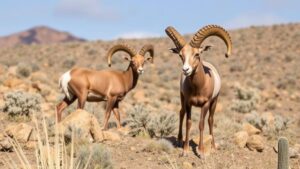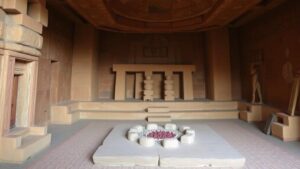Searching for the real-life inspiration behind the myth of the Minotaur and the Labyrinth.
Searching for the Real-Life Inspiration Behind the Myth of the Minotaur and the Labyrinth
The myth of the Minotaur, a creature with the body of a man and the head of a bull, is one of the most enduring legends from ancient Greece. Emerging from the labyrinthine depths of Crete, this tale intertwines themes of mythology, history, and cultural symbolism. Scholars and historians have sought the real-life inspirations that may have led to the creation of this captivating legend. This article delves into the possible historical, archaeological, and cultural elements behind the Minotaur and the legendary labyrinth.
The Historical Context of the Minotaur Myth
The story of the Minotaur is primarily associated with the ancient Minoan civilization that flourished on the island of Crete around 2600 to 1400 BCE. This civilization was advanced for its time, known for its impressive palaces, trade networks, and artistic achievements. The palace of Knossos, built during this era, features intricate architectural designs and has been linked to the labyrinthine structure described in the myth.
Excavations at Knossos by the British archaeologist Sir Arthur Evans revealed a complex and multi-storied layout, which could arguably resemble a labyrinth. elaborate passages and numerous rooms might have inspired the tale of a maze that housed the Minotaur. The frescoes discovered at the site depict various aspects of Minoan life, including bull-leaping, which emphasizes the significance of bulls in Minoan culture.
The Symbolism of the Bull in Minoan Culture
The relevance of bulls in Minoan society cannot be overstated. Bulls symbolized strength, fertility, and prosperity, and were often featured in religious rituals. Bull-Leaping Fresco from Knossos illustrates this cultural practice, where individuals would grasp a bulls horns and leap over its back–a dangerous yet revered activity.
Also, the bulls head imagery appears in various Minoan artifacts, indicating its importance. The connection between bulls and power may well have contributed to the conception of the Minotaur as a hybrid creature that symbolizes both human intellect and animalistic strength.
Archaeological Evidence and Interpretations
While the tale of the Minotaur is steeped in mythology, certain archaeological findings can shed light on its origins. Evidence of bull worship has been uncovered in various Minoan locations, including depictions of bull sacrifices and rituals. Plus, the ceremonial significance of bulls is documented in Ancient Greek literature, which often references the inherent connection between the bull and the sacred.
The legend may also have been a narrative device to explain natural phenomena, moral dilemmas, or societal challenges. For example, the labyrinth itself could symbolize the complexities of human existence, where individuals navigate their paths amidst chaos, much like Theseus, who ultimately conquers the Minotaur.
The Psychological and Cultural Resonance of the Myth
The Minotaur myth taps into deeper psychological and symbolic themes, such as the struggle between civilization and primal instinct. This duality can reflect the internal conflicts faced by individuals and societies alike. In modern interpretations, the Minotaur can signify the darker aspects of human nature–those traits we seek to suppress or control.
Also, the labyrinth can serve as a metaphor for lifes uncertainties and the intricate choices we must navigate. The journey of Theseus through the labyrinth serves as a potent reminder of the ability to conquer fears and confront our personal Minotaurs.
Conclusion: Lessons from the Minotaur and the Labyrinth
Though rooted in myth, the story of the Minotaur and the Labyrinth reflects historical, cultural, and psychological realities of the ancient Minoan civilization and beyond. The combination of architectural marvels, bull symbolism, and layered meanings provides a rich tapestry through which we can understand human nature and societal constructs.
As we explore these ancient narratives, we can derive actionable takeaways:
- Study the cultural contexts of myths to uncover underlying truths about human behavior and society.
- Examine archaeological findings to draw connections between ancient stories and real-world practices.
- Reflect on personal challenges and internal conflicts through the allegorical lens of timeless legends.
Engaging with the myth of the Minotaur not only enhances our understanding of ancient cultures but also encourages introspection about our own lives. Such stories possess the power to resonate across generations, illuminating both our past and present.



